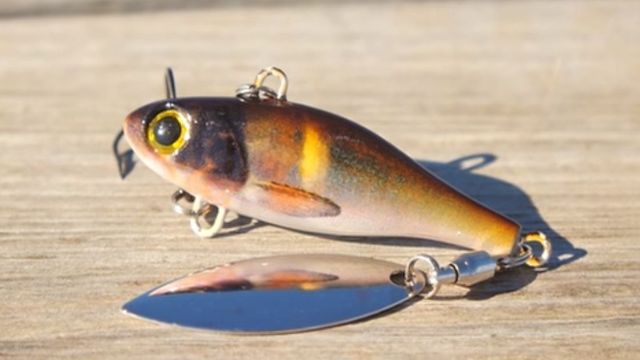
The Tailspinner - A Grandpappy Approved Winter Bass Snatcher
Touring pros and fishing guides have always reserved a spot in their tackle boxes for tailspinners but newcomers to the sport seem to be more attracted by all the latest creations of lure manufacturers.
The veteran anglers know the heavy metal lure with a spinner on its end has the characteristics of both a spinnerbait and a jigging spoon, so they rely on the tailspinner for a variety of presentations—especially in clear, deep water. The tailspinner is just as effective now as it was when Tom Mann introduced the first version of the lure, the Little George, back in the 1960’s.
PC: Tackle Hut
The versatility of a tailspinner makes it an effective lure throughout the year, but there are certain times when it is most productive. Some anglers depend on the lure any time bass are schooling. The postspawn, late fall and winter are prime times for fishing a tailspinner. The lure produces when bass school along drop-offs in the fall and winter on lakes throughout the South. In Midwestern lakes, a tailspinner is great when bass suspend over deep water in the spring and fall.
PC: Tactical Bassin
The pros probe deep water with tailspinners most of the time, but there are situations in which they catch bass on the lure at a variety of depths. When bass are up busting shad you can pull it through them and catch fish near the surface, but you will have more luck letting the lure fall because the bigger fish are usually under those bass that are busting the shad.
When fishing the drop-offs in the wintertime cast the lure to the structure and let it fall to the bottom. Then lift your rod tip in the same motion as you would work a plastic worm and let the lure fall to the bottom. Strikes usually occur as the lure flutters down.
Any drops along points, humps, creek and river channels or ditches are key spots to try a tailspinner. When you locate surfacing bass during the warmer months, steadily reel the lure through the schooling fish. However, for deeper fish let the lure sink to the bottom, then sweep your rod tip up high. While holding your rod up, let the lure pendulum back to the bottom on a tight line.
You can also vertical jig the lure by lifting it up and down like a spoon for bass suspended over deep water. Although it’s neglected by many today, the tailspinner remains an effective lure for savvy anglers who know how, when and where to use it.
Updated December 19th, 2019 at 5:09 AM CT
